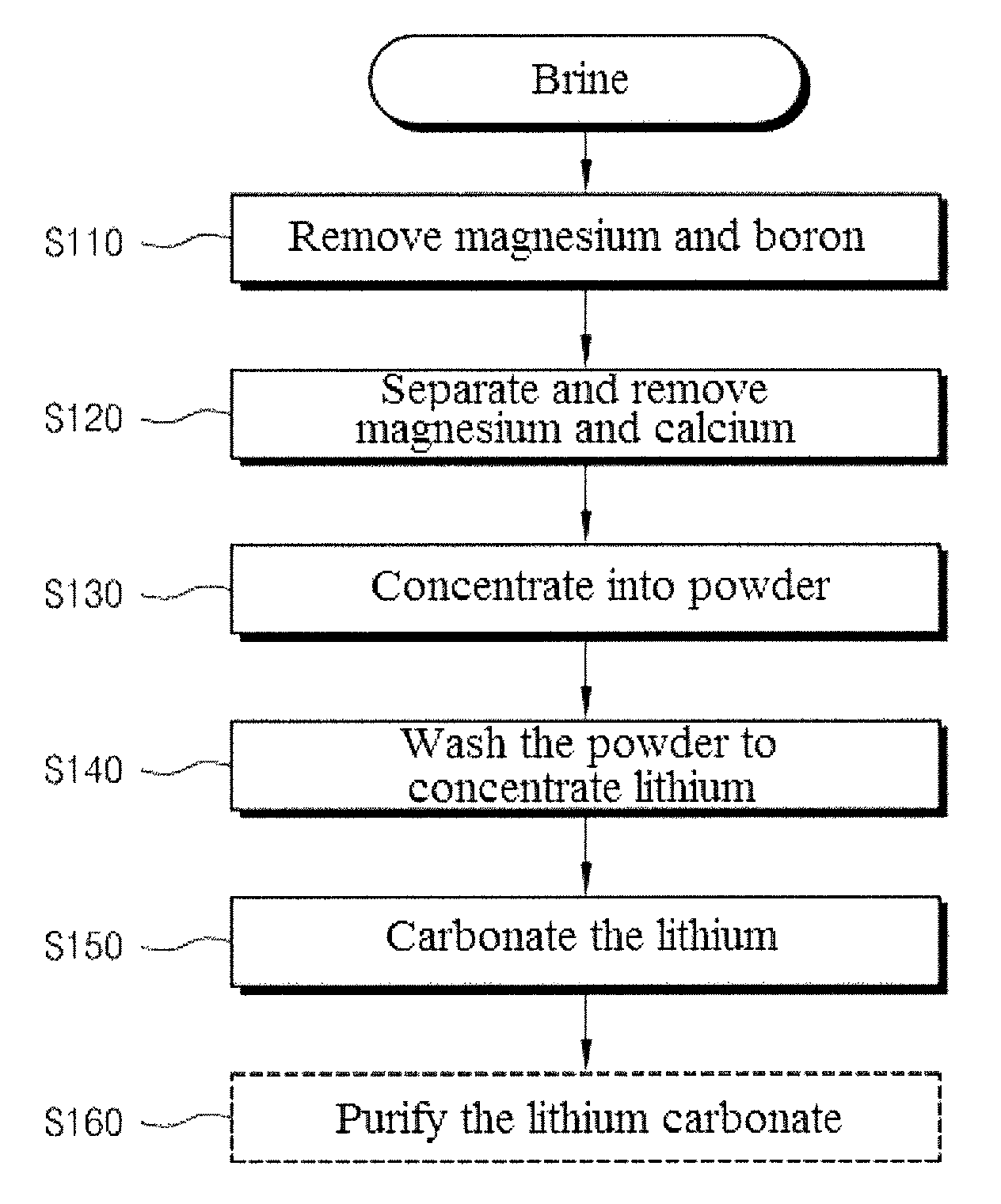Method for producing high-purity lithium carbonate
a lithium carbonate, high-purity technology, applied in the direction of lithium compounds, lithium carbonates/bicarbonates, inorganic chemistry, etc., can solve the problems of insufficient technology for brine production of lithium carbonate in south korea, uneven distribution of lithium reserves, and steep rise in lithium carbonate price, etc., to shorten the time required for brine concentration, shorten the time required for recovery, and improve the effect of recovery
- Summary
- Abstract
- Description
- Claims
- Application Information
AI Technical Summary
Benefits of technology
Problems solved by technology
Method used
Image
Examples
Embodiment Construction
[0058]Hereinafter, embodiments of the present invention will be explained in detail. In the following example, lithium carbonate was produced from the Bolivia's Uyuni brine by using precipitation and concentration processes. First, a certain amount of a sample was taken from the Bolivia's Uyuni brine. Chemical analysis revealed that the brine sample had a neutral pH of 7.0±0.2 and a density of 1.20±0.01 g / mL. The brine sample was essentially composed of Li, Ca, Mg, Na, K and B cations and Cl and SO4 anions. The composition of the brine sample is shown in Table 1.
[0059]
TABLE 1ContentIong / Lmol / LLi0.840.12Ca3.330.083Mg16.70.687Na105.44.59K13.70.35B0.700.06Cl−203.75.58SO42−21.30.22
[0060]As can be seen from the results in Table 1, the contents of magnesium ions and sulfate ions in the brine were about 20 times and about 26 times higher than the content of lithium ions, respectively.
[0061]Taking the solubility of MgCl2 into consideration, it is anticipated that evaporation and concentrati...
PUM
| Property | Measurement | Unit |
|---|---|---|
| temperature | aaaaa | aaaaa |
| temperature | aaaaa | aaaaa |
| temperature | aaaaa | aaaaa |
Abstract
Description
Claims
Application Information
 Login to View More
Login to View More - R&D
- Intellectual Property
- Life Sciences
- Materials
- Tech Scout
- Unparalleled Data Quality
- Higher Quality Content
- 60% Fewer Hallucinations
Browse by: Latest US Patents, China's latest patents, Technical Efficacy Thesaurus, Application Domain, Technology Topic, Popular Technical Reports.
© 2025 PatSnap. All rights reserved.Legal|Privacy policy|Modern Slavery Act Transparency Statement|Sitemap|About US| Contact US: help@patsnap.com


